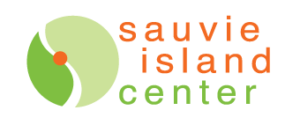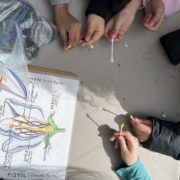Reflections on Pollinators
Spring has arrived on the farm. Frogs are singing in the ephemeral pools. The dandelion, borage, currant, Oregon grape, strawberry, cherry, pear, and apple flowers bloom in whites, pinks, yellows, and purples. The thick mud from winter rains are finally drying up. With flowers so abundant right now, we know who else to keep our eyes open for: the pollinators.
Pollination is the transfer of pollen from one flower to another for fertilization. Every piece of fruit you eat was once a flower. A pollinator is a facilitator in this process. When we talk about pollinators, we usually think of insects and animals like bees, butterflies, hummingbirds, some species of bats, mosquitoes, wasps, flies, and beetles who visit flowers to drink nectar, get pollen stuck to their bodies, and transfer that pollen as they feed on other flowers.
1 out of every 3 bites of food we eat rely on animal or insect pollinators. They are responsible for fertilizing $50 billion worth of American agriculture every year. Imagine trying to pollinate all that food by human hand or machine. A healthy pollinator population is critical to the integrity of our agricultural and food systems.
When we teach students about pollinators, we want them to appreciate the full gravity of an observed fuzzy bumblebee drinking from a dandelion in the garden. We want them to see this symbiosis as part of the dramatic tale behind the apple they’ll be eating for lunch that day.
At the Sauvie Island Center, we might be scientists, but we are also storytellers.
Spring has arrived on the farm, and if you know how to look for it, one of nature’s most beautiful stories of cooperation, the mutualism of plants and pollinators at work together, is in full swing. It’s a natural history play happening in all of our gardens, parks, and forests, right now, right beneath our noses. If you blink, you’ll miss it.
That’s why spring is the perfect time to teach students about pollinators.




Trackbacks & Pingbacks
[…] that melted into surprisingly hot days in May. It was also an unusually pollen-dense year, which our favorite pollinators really appreciated but led to many sneezy students and itchy eyes. Fortunately, our educators got […]
Comments are closed.